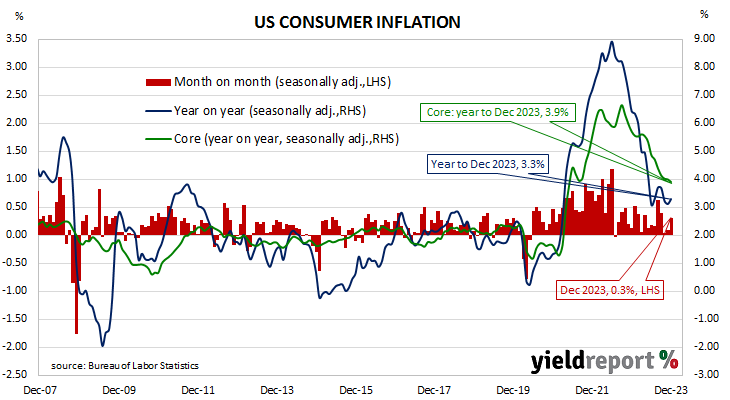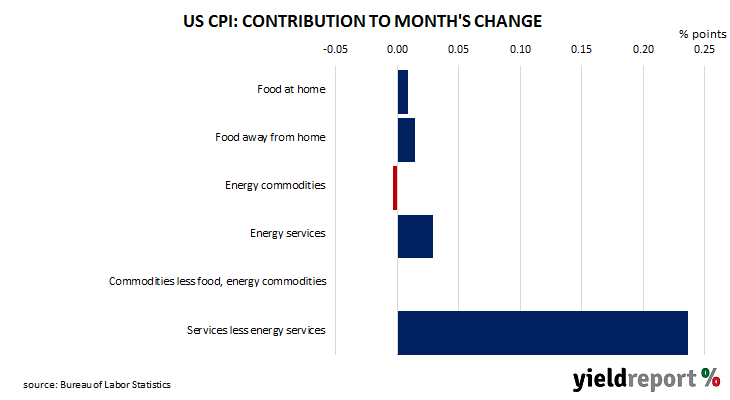Summary: US CPI up 0.3% in December, above expectations; “core” rate also up 0.3%; Citi: core CPI at 3-4% annualized pace for past 5 months; Treasury yields down, especially at short end; rate-cut expectations harden; Citi: core goods prices weak, services inflation consistently much stronger; prices of non-energy services main driver again.
The annual rate of US inflation as measured by changes in the consumer price index (CPI) halved from nearly 3% in the period from July 2018 to February 2019. It then fluctuated in a range from 1.5% to 2.0% through 2019 before rising above 2.0% in the final months of that year. Substantially lower rates were reported from March 2020 to May 2020 and they remained below 2% until March 2021. Rates then rose significantly before declining from mid-2022.
The latest US CPI figures released by the Bureau of Labor Statistics indicated seasonally-adjusted consumer prices rose by 0.3% on average in December. The increase was above the 0.2% rise which had been generally expected as well as November’s 0.1%. However, on a 12-month basis, the inflation rate accelerated from 3.1% to 3.3%.
“Headline” inflation is known to be volatile and so references are often made to “core” inflation for analytical purposes. The core prices index, the index which excludes the more variable food and energy components, also increased by 0.3% on a seasonally-adjusted basis over the month, in line with expectation. The annual growth rate slowed from 4.0% to 3.9%.
“Core CPI has been running around a 3-4% annualized pace for the last five months, with a 0.31% increase in December that was somewhat stronger than our 0.26% forecast,” said Citi economist Veronica Clark.
US Treasury bond yields fell on the day, especially at the short end. By the close of business, the 2-year Treasury yield had shed 11bps to 4.26%, the 10-year yield had lost 6bps to 3.98% while the 30-year yield finished 2bps lower at 4.19%.
In terms of US Fed policy, expectations of a lower federal funds rate in the next 12 months hardened. At the close of business, contracts implied the effective federal funds rate would average 5.32% in February, 1bp less than the current spot rate, 5.255% in March and 5.14% in April. January 2025 contracts implied 3.785%, 155bps less than the current rate.
“Details underlying core inflation have also been very similar month to month; core goods prices remain weak but services inflation, for both shelter and non-shelter services, is consistently much stronger, ” Clark added.
The largest influence on headline results is often the change in fuel prices. Prices of “Energy commodities”, the segment which contains vehicle fuels, decreased by 0.1% and contributed zero percentage points to the total. However, prices of non-energy services, the segment which includes actual and implied rents, again had the largest effect on the total, adding 0.24 percentage points after increasing by 0.4% on average.



